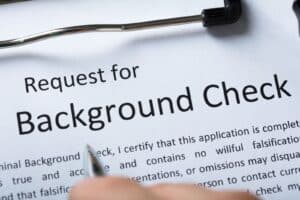Medical Licenses for Physicians

Every state in the U.S. requires physicians to have a current medical license to practice medicine.
All physicians must meet their state’s requirements to obtain their license, and if they plan to work in multiple states, they need to have multiple licenses to do so.
In this guide, we’ll discuss how the licensing process works, what the requirements are, and how to get licensed in multiple states at the same time.
Educational Requirements for a Medical License
You cannot get a medical license in the United States without the proper training and education. To get yours, you’ll need to have the right:
Medical education
Residency training
CME hours
Graduate Medical Degree
The first step is to complete your medical education at an accredited medical college. If you attended medical school at an unaccredited college or one outside the U.S. or Canada, it must be listed on the World Directory of Medical Schools in order for you to qualify.
International medical graduates must also have their ECFMG certification through the Educational Commission for Foreign Medical Graduates.
IMGs should keep in mind that the entire application and approval process can take longer for them than it typically does for graduates from accredited schools within the U.S. or Canada.
Residency Training
In addition to a graduate degree from an approved medical school, applicants also need to have some residency training under their belt.
The number of years of residency required varies across the country. Some state medical boards require you to complete a minimum of 12 months of a residency training program, while others require two or three years. Foreign medical graduates sometimes need even more.
Continuing Medical Education
Some states also have CME requirements and specific coursework that you have to do before applying for licensure.
For example, to get a medical license in New York, you must complete New York’s Infection Control and Barrier Precautions Training. In Ohio, if you haven’t been in practice for two or more years before applying, you may even be tasked with completing more training or undergoing additional examinations to prove your candidacy for licensure.
Check out your state medical board’s website to determine how many CME hours or specific training sessions you need.
Examination Requirements for a Medical License
Examinations prove your competency as a physician, and all physicians in all specialties will need to have passed a series of specific exams to qualify for licensure.
In most states, you’ll need passing scores on all parts of the USMLE, FLEX, or COMLEX. The exams vary depending on your specialty and where you attended school.
Some boards also consider various combinations of different steps and parts of different examinations as eligibility. Consult with your state medical board to see which exams you’ll have to pass to get licensed.
Remember that some boards also have requirements for how many attempts it took you to pass those required exams. For example, California requires that you pass the USMLE in four attempts or less. If it took you more than four tries, you may have to jump some additional hurdles to get your license.
Medical Licenses Require a Background Check
Felonies, misdemeanors, and other prior “bad acts” can prevent you from getting your license to practice medicine. While different states have different standards, all require a criminal background check prior to licensure.
If you have any history of criminal arrests or convictions, be sure to disclose that information upfront. Even if your record was expunged, your state may require you to disclose the details of your arrest and/or conviction.
How Long Does it Take to Receive a Medical License?
Physician licensure processing times vary by state and can range from as little as two weeks to as long as several months. When application volume is high, processing times can take even longer.
The American Medical Association says to expect that it will take a minimum of two months to receive your license after your board has received your application. However, some states are notorious for taking much longer, while others process applications faster.
If you’re applying for a medical license in California, don’t be shocked if it takes more than six months to receive it. California has one of the longest processing times in the country.
In Vermont, however, it’s a lot faster. The average timeframe to receive a Vermont medical license ranges from six to twelve weeks.
To avoid delays in starting a new job, apply for your license as soon as you meet all of the criteria for eligibility.
How Much Does a Medical License Cost?
Despite the exorbitant cost of medical school and the low salary that residents earn, be prepared to shell out even more money when you submit your application to your licensing board.
Licensure costs vary by state; many even have different rates for MDs and DOs. Depending on where you plan to work, application fees range from as little as $35 to as much as $1,425.
Nevada charges the most, with an initial application fee of $1,425. For a state medical license in Pennsylvania, you’ll pay an initial application fee of just $35. If you’re planning to get your medical license in Texas, New Jersey, or the District of Columbia, expect to pay just over $800.
Keep in mind that licenses are only valid for a short period of time. Depending on your state, you’ll have to renew your license every one to three years and pay an additional fee each time.
See this table from the Federation of State Medical Boards (FSMB) to view the current initial application and license renewal costs for MDs and DOs nationwide.
Application Fees Aren’t the Only Fees
The application fee isn’t the only cost involved in licensing. You may also have to pay to register with the FCVS.
The Federation Credentials Verification Service is provided through the FSMB and is the official source for some of the many documents you’ll need to submit with your application. (We’ll go into more detail on that in a minute).
FCVS charges $395 to submit your documents to one state licensing board, plus an additional $99 for every other board you apply to.
You’ll Have to Pay for a DEA License, Too
A Drug Enforcement Administration license is required by law for prescribing narcotics and controlled substances. While some physicians in certain specialties may not need or want a DEA license, those who do must pay $888 every three years.
Can You Get Licensed in Multiple States at the Same Time?
Physicians who intend to work in multiple parts of the country have to follow the licensure process for each and every state they work in. The good news is that there is an easy way to do so.
The Interstate Medical Licensure Compact (IMLC) streamlines the process and allows physicians to get licensed in multiple states simultaneously or at different points throughout their career.
This is especially helpful for locum tenens physicians who travel frequently to work in medical practices around the country. It’s also a huge benefit for those that provide patient care via telemedicine in multiple locations.
Read more: Everything You Need to Know About Working as a Locum Tenens Physician
How Does the IMLC Work?
Physicians can participate in the IMLC if they are currently licensed in a “compact state.” Not all states are part of the compact (yet), but as of right now, 37 are.
To apply for additional licenses through the IMLC, you must meet a set of specific requirements, including:
You hold a current, valid, unrestricted license in a compact state.
You passed each part of the USMLE or COMLEX in no more than three attempts.
You are not currently under investigation.
You have no disciplinary actions on your record.
If you meet these criteria, you may be eligible to obtain one or more additional licenses through the IMLC without dealing directly with each state’s medical board. The initial fee to apply through the IMLC is $700, plus individual state fees for each license.
Want to know if your state is one of the 37 that participate? View the current IMLC participating states map here.
Tips for Applying for Your License
The license application process can be time-consuming, as it requires you to submit a vast amount of personal information and documentation that verifies you meet the educational, examination, and background check requirements.
Here are some tips on how to make it easier.
Visit Your State Medical Board’s Website
Before starting the application process, visit your state’s official website (ending in .gov). There you can obtain a complete list of all the requirements you’ll need to meet, as well as official application forms.
View the FAQs on the .gov website to determine which source(s) your state will accept verification from. Some require primary source verification, while others prefer that you submit verifying documents through the FCVS.
The FCVS can verify your:
Examination scores
Completed education
Residency training
While most boards accept FCVS verifications, some require it.
If yours does, be sure to register with the FCVS so you can get your verification documents in order in a timely manner. Once they have your verification records, you can pay to have them submitted to any board at any time.
Make Sure Your Application is Complete
It’s vital that you complete your application with 100% accuracy. Even the slightest error can cause delays in the approval process, which in some places already takes several months.
Disclose All Important Information
Be sure to disclose and be honest about any disciplinary actions or malpractice complaints against you. Whether you have a complaint or action pending or have had one in the past, you’ll want to be upfront about the details.
If you have malpractice claims against you now or in the past, your state board may ask you to include all court papers regarding those claims.
Whether you had to pay damages or were found to be not at fault, medical boards typically want to see documentation to ensure that they’re issuing licenses to qualified physicians only.
Be Patient

Waiting out the license approval process often seems like yet one more hoop to jump through in order to practice medicine.
Because you have no control over how quickly (or slowly) the medical board reviews your application, the best thing to do is practice patience.
If you’ve met all the requirements, submitted an accurate application, and done your due diligence, your license should arrive — it just might take a little while.
Recap
From nurses and physician assistants to MDs and DOs, all healthcare professionals must obtain a medical license. The application process can be complex, involve fees and background checks, and take several months.
Once you do receive your license, be sure to take the proper steps to protect it. That includes knowing what CME requirements you have to fulfill for license renewal and purchasing liability coverage with a malpractice insurance policy. If your state mandates that you carry malpractice insurance, failure to obtain coverage could result in your license being suspended.
Contact LeverageRx now to obtain malpractice insurance rates and compare insurance companies in your region.




